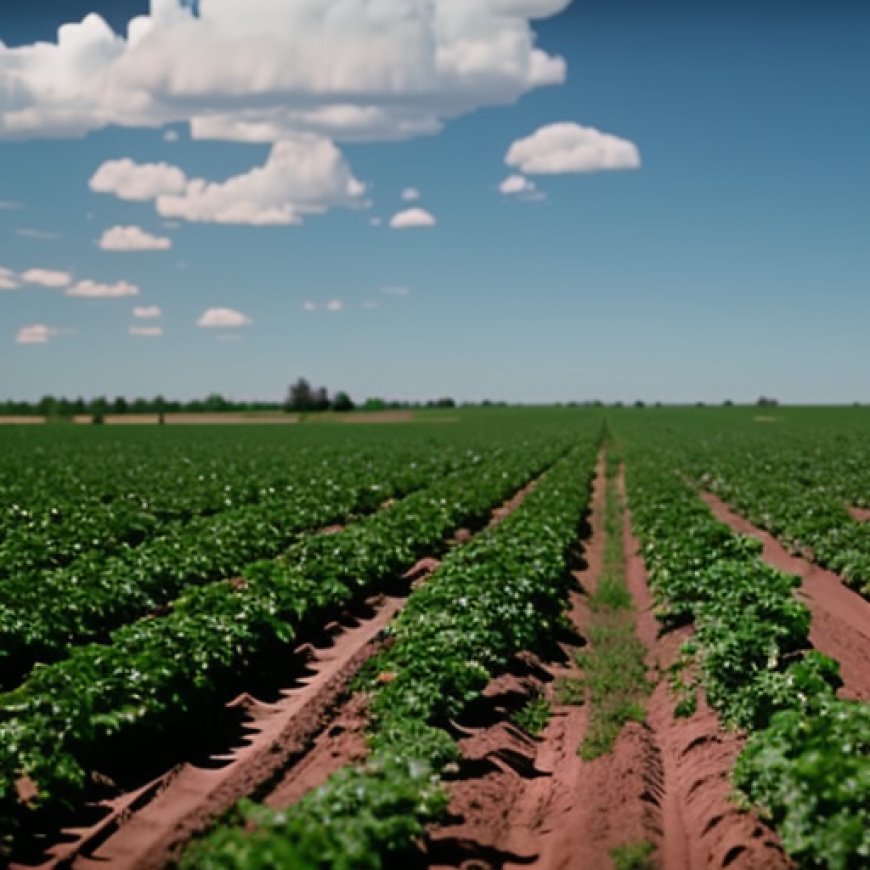Agricultural Land Lost to Development in the Midwest – farmdoc daily


Conversion of Agricultural Land to Developed Land in the Midwest
Introduction
The loss of agricultural land to development has been a significant topic of discussion at the national and state level. This report examines the conversion of agricultural land to developed land in eight Midwestern states during the 21st Century. The analysis uses the best available data set to assess the extent of this conversion and its implications for sustainable development.
Data Sources
The analysis utilizes the National Land Cover Database (NLCD), which provides comprehensive information on land cover changes. The NLCD uses satellite images and other cartographic datasets to analyze land use change from 2001 to 2021 in Illinois, Indiana, Iowa, Michigan, Minnesota, Missouri, Ohio, and Wisconsin. The focus of this report is on the conversion of agricultural land to developed land.
Agricultural Land Lost to Development by Midwestern State
According to the NLCD, agricultural land in the eight Midwestern states decreased by 1,595,655 acres (1.06%) between 2001 and 2021. Of this loss, 877,386 acres (55%) were converted into developed land, primarily due to urbanization and infrastructure expansion. Other agricultural land losses included conversion to forest, barren land, open water, and grassland.
Among the states, Iowa had the highest proportion of agricultural land converted to development (90%), while Illinois had the greatest loss in terms of acres (155,653). The smallest agricultural land loss to development occurred in Wisconsin, Ohio, and Missouri, with development accounting for 56%, 48%, and 26% of the total loss, respectively.
Agricultural Land Lost to Development by Metropolitan Statistical Areas (MSAs)
An analysis at the Metropolitan Statistical Area (MSA) level reveals that 81% of the agricultural land lost to development in the eight states occurred within MSAs. The highest share of agricultural land lost to development within MSAs was in Illinois (89%), followed by Indiana, Michigan, Minnesota, and Wisconsin, all of which lost over 80% of their agricultural land to development within MSAs. The MSA share was lowest in Iowa at 69%, while Missouri and Ohio had a share of 77%.
Agricultural Land Lost to Development by County
The top three counties in each state with the highest number of acres of agricultural land converted to development are listed in Table 3. Will County in Illinois had the largest amount of agricultural land converted to development (31,566 acres), followed by Polk County in Iowa (19,664 acres) and Hamilton County in Indiana (18,068 acres).
Summary
Between 2001 and 2021, the Midwest experienced a loss of 1,595,655 acres (1.06%) of agricultural land. Urbanization and infrastructure expansion accounted for 55% of this loss, highlighting the need to address the expansion of large urban areas to reduce the loss of agricultural land. The analysis also revealed variations in the extent of agricultural land lost to development among states, MSAs, and counties, emphasizing the importance of regional planning and development strategies to promote sustainable land use.
Data Note 1
The NLCD defines agricultural land as cultivated cropland or pasture/hay. Developed land includes developed open space, developed low intensity, developed medium intensity, and developed high intensity categories. Each category represents different levels of built materials and impervious surfaces. For more information, visit the National Land Cover Database Class Legend and Description.
SDGs, Targets, and Indicators
1. Which SDGs are addressed or connected to the issues highlighted in the article?
- SDG 2: Zero Hunger
- SDG 11: Sustainable Cities and Communities
- SDG 15: Life on Land
2. What specific targets under those SDGs can be identified based on the article’s content?
- SDG 2.4: By 2030, ensure sustainable food production systems and implement resilient agricultural practices that increase productivity and production, that help maintain ecosystems, that strengthen capacity for adaptation to climate change, extreme weather, drought, flooding, and other disasters, and that progressively improve land and soil quality.
- SDG 11.3: By 2030, enhance inclusive and sustainable urbanization and capacity for participatory, integrated, and sustainable human settlement planning and management in all countries.
- SDG 15.1: By 2020, ensure the conservation, restoration, and sustainable use of terrestrial and inland freshwater ecosystems and their services, in particular forests, wetlands, mountains, and drylands, in line with obligations under international agreements.
3. Are there any indicators mentioned or implied in the article that can be used to measure progress towards the identified targets?
- Indicator 2.4.1: Proportion of agricultural area under productive and sustainable agriculture
- Indicator 11.3.1: Ratio of land consumption rate to population growth rate
- Indicator 15.1.1: Forest area as a proportion of total land area
Table: SDGs, Targets, and Indicators
| SDGs | Targets | Indicators |
|---|---|---|
| SDG 2: Zero Hunger | Target 2.4: By 2030, ensure sustainable food production systems and implement resilient agricultural practices that increase productivity and production, that help maintain ecosystems, that strengthen capacity for adaptation to climate change, extreme weather, drought, flooding, and other disasters, and that progressively improve land and soil quality. | Indicator 2.4.1: Proportion of agricultural area under productive and sustainable agriculture |
| SDG 11: Sustainable Cities and Communities | Target 11.3: By 2030, enhance inclusive and sustainable urbanization and capacity for participatory, integrated, and sustainable human settlement planning and management in all countries. | Indicator 11.3.1: Ratio of land consumption rate to population growth rate |
| SDG 15: Life on Land | Target 15.1: By 2020, ensure the conservation, restoration, and sustainable use of terrestrial and inland freshwater ecosystems and their services, in particular forests, wetlands, mountains, and drylands, in line with obligations under international agreements. | Indicator 15.1.1: Forest area as a proportion of total land area |
Source: farmdocdaily.illinois.edu








